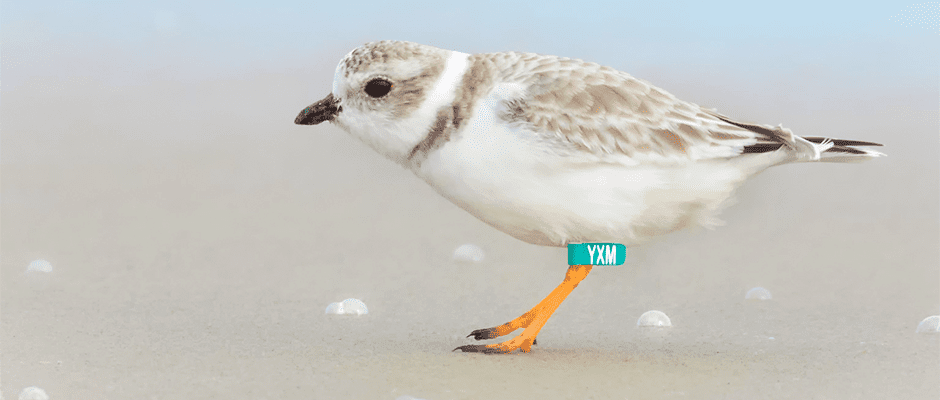Share this article
Humans disturb piping plovers on nonbreeding grounds
Most piping plover (Charadrius melodus) research focuses on disturbances during their breeding season, but researchers recently found anthropogenic disturbances can also have consequences for the shorebirds where they overwinter.
“The nonbreeding season is a very important part of the piping plover lifecycle, and disturbances that they face during this season can really have population-level consequences,” said Daniel Gibson, a postdoctoral researcher at Virginia Tech and lead author of the recent study published in The Condor: Ornithological Applications.
Gibson’s project began when his colleagues were studying piping plovers after the Deepwater Horizon spill. They picked an area in Georgia as a control site to compare plovers inside and outside of the spill area. By happenstance, Georgia had a major cold weather event that changed the course of the study.
“In January and February 2011, people in the field noticed a 50 percent reduction in survival over a two-week period,” he said. “Our control site had less survivability than the Deepwater Horizon sites.”
This led Gibson and his colleagues to look at piping plovers on their nonbreeding grounds and the environmental factors that may affect them. In North and South Carolina and Georgia, they also began noticing variation in the amounts of human activity occurring on nonbreeding grounds where piping plovers overwinter. This included simply walking on the beach, letting dogs run on the beach, and more intense disturbances such as modifying beaches to protect homes from flooding.
To conduct the study, the Virginia Tech Shorebird Lab went to the southeast Atlantic Coast a couple of times a year and counted piping plovers that were marked or banded. They also used citizen-collected data for birds on their breeding grounds and throughout their wintering range in order to estimate site fidelity and survival.
“We have this huge network of people that like to look at piping plovers on the beaches,” Gibson said, “so we could actually pair community-based data or citizen science data with our own survey data to start to get at whether individuals leaving our study system due to mortality or simply moving somewhere else.”
They then quantified the differences in human disturbances across the wintering grounds as well as individual impacts on the plovers, such as changes in body condition or weight.
Gibson and his colleagues found that in overwintering areas that had higher levels of human disturbances, piping plovers survived at a lower rate. On disturbed areas, piping plovers were overall about 4 grams lighter than on less disturbed areas. However, they didn’t find a relationship between human disturbance and site fidelity. Gibson said this means the piping plovers continued to come back to the same sites regardless of how much human disturbance was present.
“We can’t always expect them to make the best decision for their best fitness,” he said.
The study shows the importance of looking at nonbreeding grounds, Gibson said. “A lot of conservation actions focus on the breeding grounds,” he said. “What we try to show here is when something migrates, it needs protection.”
That may include other shorebirds, such as red knots, oyster catchers and Wilson’s plovers, which use similar habitat. They may also benefit from management action on overwintering grounds such as closing off beaches or keeping dogs off the beach, he said.
Header Image: A banded piping plover stands on a beach. Researchers recently found human disturbances can negatively impact piping plovers on their nonbreeding grounds. ©Daniel Gibson








